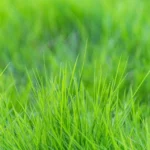
Garlic has been used for culinary and medicinal purposes for over 5,000 years. Its use dates back to ancient times in Egypt, where it was used to treat a variety of ailments, from infections to digestive issues. Garlic was also used by the ancient Greeks and Romans for its medicinal properties, and was believed to have cleansing and healing powers.
The ancient Egyptians believed that garlic had healing properties and used it to treat a variety of ailments. They believed that garlic could ward off evil spirits and protect against disease. Garlic was also used as a form of currency in ancient Egypt, and was given to workers building the pyramids to enhance their strength and endurance.
Garlic is a natural antibiotic and has been shown to have antibacterial and antifungal properties. Its active ingredient, allicin, has been shown to be effective against a variety of bacteria and fungi, including antibiotic-resistant strains. This makes garlic a popular natural remedy for infections and other health issues.
Garlic is high in antioxidants, which help to protect the body against oxidative stress and free radicals. This may help to reduce the risk of chronic diseases like cancer, heart disease, and Alzheimer’s disease. Garlic is also a good source of vitamin C, which supports a healthy immune system.
Eating garlic may help to lower cholesterol levels and reduce the risk of heart disease. Studies have shown that garlic can help to lower blood pressure and improve blood lipid levels, which are both risk factors for heart disease. Garlic may also have a blood-thinning effect, which can help to prevent blood clots.
Garlic is rich in vitamins and minerals, including vitamin C, vitamin B6, and manganese. These nutrients are important for maintaining overall health and wellbeing. Vitamin C is a powerful antioxidant that supports immune function, while vitamin B6 is important for energy metabolism. Manganese is involved in bone health and connective tissue formation.
Garlic contains a compound called allicin, which gives it its distinctive smell and flavor. Allicin is formed when garlic is chopped or crushed, and is believed to have a variety of health benefits. It has been shown to have antibacterial and antifungal properties, and may also have anti-inflammatory effects.
Allicin is released when garlic is chopped or crushed, and is believed to have a variety of health benefits. In addition to its antibacterial and antifungal properties, allicin has been shown to have anti-inflammatory effects. It may also help to lower cholesterol levels and improve heart health.
Garlic can be used to repel mosquitoes and other insects due to its strong odor. This makes garlic a popular natural remedy for insect bites and stings. Garlic can be applied topically or ingested to repel insects.
Garlic is a member of the Allium family, which also includes onions, shallots, and chives. These vegetables are known for their distinctive flavors and health benefits. They are also rich in sulfur compounds, which are responsible for their pungent aroma.
There are over 600 varieties of garlic grown around the world. These varieties differ in their size, flavor, and color. Some varieties are better suited for certain culinary uses, while others are prized for their medicinal properties.
Garlic is believed to have originated in Central Asia and was brought to Europe by the ancient Greeks and Romans. It has been cultivated for thousands of years and is now grown in many parts of the world. Garlic is a staple ingredient in many cuisines around the world and is also used for its medicinal properties.
China is the world’s largest producer of garlic, followed by India and South Korea. These countries account for the majority of the world’s garlic production. In fact, China produces over 80% of the world’s garlic supply. In 2020, China produced over 22 million tons of garlic, while India produced around 1.5 million tons and South Korea produced around 0.2 million tons. Garlic is an important crop for these countries, both for domestic consumption and for export to other countries. The high demand for garlic has led to an increase in garlic production in other countries as well, including the United States, Spain, and Argentina. Despite this competition, China remains the world’s top garlic producer and exporter.
Garlic is easy to grow and can be grown in a variety of climates. It is a popular vegetable to grow in home gardens, as it requires little space and can be grown in containers. Garlic can be planted in the fall or spring, and harvested in the summer.
Garlic has been used as a natural remedy for colds and flu for centuries. It is believed to have immune-boosting properties and may help to reduce the severity and duration of cold and flu symptoms. Some people even take garlic supplements to help prevent colds and flu.
Garlic has a long history of use as an aphrodisiac. It was used by the ancient Egyptians and Greeks to enhance libido and sexual performance. While there is limited scientific evidence to support these claims, some people still believe in the aphrodisiac properties of garlic.
Garlic has been used as a natural remedy for acne and other skin conditions. Its antibacterial properties may help to reduce inflammation and fight off acne-causing bacteria. Garlic can be applied topically or ingested to help improve skin health.
Garlic has a variety of culinary uses and is used in many different cuisines around the world. It can be used fresh or dried, and is often used to add flavor to savory dishes like soups, stews, and sauces. Garlic can also be roasted, fried, or pickled for a different flavor and texture.
Garlic supplements are popular among those seeking to boost their health. These supplements typically contain concentrated doses of garlic extract, which is believed to have many of the same health benefits as fresh garlic. However, it’s important to speak with a healthcare professional before starting any new supplement regimen.
Garlic can be used to make a variety of natural household cleaners. Its antibacterial properties make it a popular ingredient in DIY cleaning solutions. Garlic can be combined with vinegar or other natural cleaning agents to create an effective and eco-friendly cleaner.
Garlic is also used in traditional medicine to treat a variety of health conditions. In some cultures, garlic is believed to have protective powers against evil spirits and the evil eye. Garlic is also used to treat conditions like high blood pressure, diabetes, and respiratory infections.
Garlic has a long history of use as a natural insecticide. It can be used to repel pests like aphids, spider mites, and mosquitoes. Garlic can be mixed with water and sprayed on plants to help prevent insect infestations.
Garlic is a versatile and flavorful ingredient that offers a variety of health benefits. From its immune-boosting properties to its ability to fight off infections, garlic is a popular natural remedy for a variety of health issues. Whether eaten raw or cooked, garlic is a delicious and nutritious addition to any diet.









